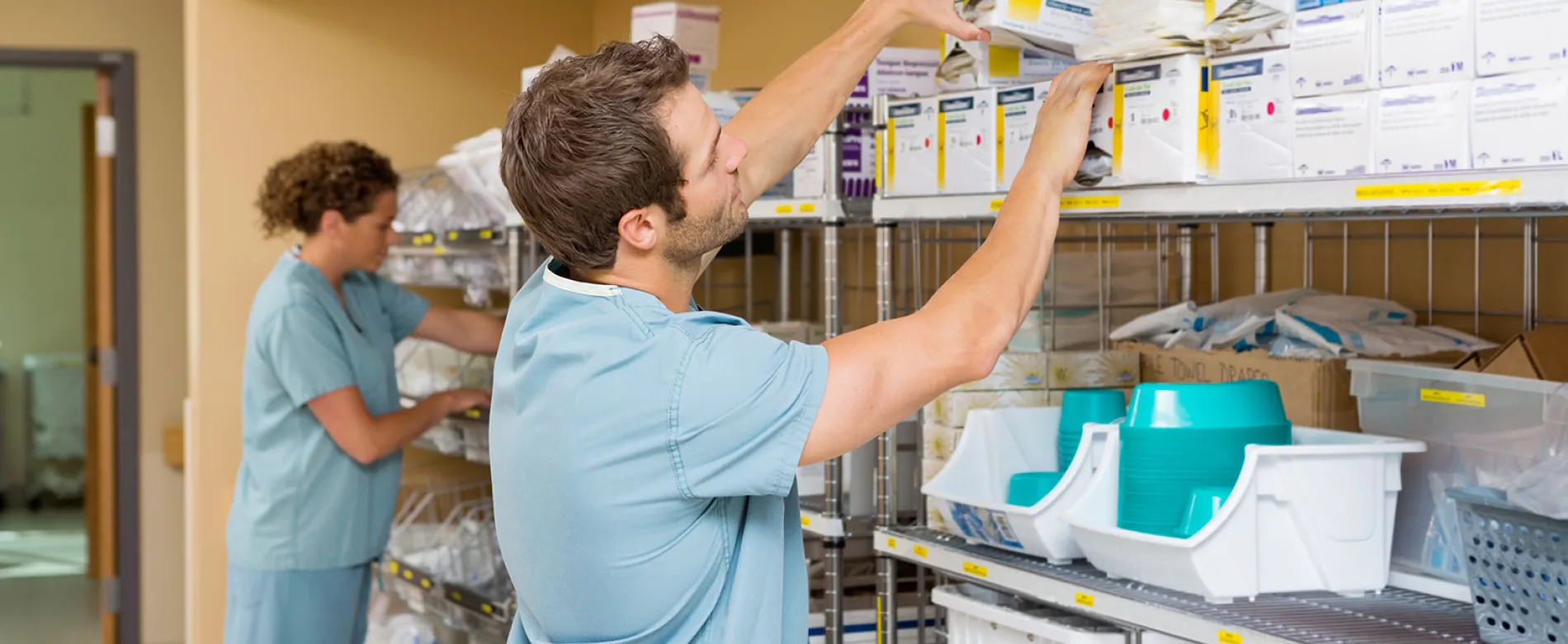How centralised theatre kitting can help reduce surgery waiting lists
The NHS is under mounting strain with the backlog of patients waiting for hospital treatment now hitting a record 7 million people, and the tightening of the government’s purse strings, all while it continues to fight the battle against COVID-19.
With these immense challenges, NHS trusts are looking for solutions to speed up the delivery of surgeries to avoid the knock-on effect on patient care while also being as cost-effective as possible.
Using RFID technology can support theatre inventory management to free up time for clinical staff to focus on patient care, whilst optimising stock holding and minimising waste.
In any acute hospital, preparing materials for scheduled and emergency procedures takes up a lot of clinical time. Centralising this task and using latest identification technologies such as RFID to streamline processes can free up theatre staff to spend more time on patient care. This in turn can help increase the number of procedures which can be carried out per day.
At the same time, not having all or all the correct materials ready for a procedure to take place, can cause delays and have a knock-on effect resulting in patients having their operations cancelled or postponed at the last minute. A structured process of compiling all the correct materials required for an operation supported by identification technologies, can eliminate human error, and reduce the risk of picking incorrect products. This helps ensure all necessary items are readily available to avoid delays and help theatre lists run to time.
By improving efficiency, using technology to centralise the theatre inventory management can also bring important cost savings to hospitals by reducing the amount of just-in-case stock, as well as helping to reduce waste – ultimately allowing hospitals to be as “lean” as possible.
But how does centralised theatre kitting work?
- Instead of holding most of the theatre supplies in each specialty area, a central store room is created.
- The knowledge of clinical staff about the required consumables for specific types of operations is captured on a system in the form of standardised pick-lists.
- Central kitting staff download the relevant list for each type of operation to an RFID handheld scanning device which indicates where each item in the central store is located.
- Items are then scanned and added to a tote box specific for each patient to create the procedure kits, which are sealed and delivered to the local theatre area.
- Unless all required items have been picked and scanned, the system automatically prevents the completion of the tote box. This improves patient safety by ensuring that all the correct items are to hand when needed.
- In order to record the use of additional consumables from local theatre stock, clinical staff simply add the empty wrappers containing an RFID label or barcode of any inventory used to the tote box.
- Post operation tote boxes are received back in the stores where the RFID labels on wrappers are scanned by the central inventory team. This means all consumables used for a procedure can be accounted for. Those unused are put back on the shelf and an accurate overall material cost of an operation is recorded and stock correctly replenished.
Case study
Save time
A major NHS trust in England is believed to be the first in the UK to introduce a central theatre kitting solution using RFID technology, preparing around 100 to 120 kits per day for elective procedures plus 50 more for emergencies.
Prior to the theatre kitting solution being implemented, clinical staff would spend an average of one hour per day per theatre preparing the materials required for operations, using up valuable time.
As a result of the theatre kitting solution, clinical staff have been freed up to focus their time on patient care as they are no longer having to find and prepare the different items needed for each procedure.
Reduce waste, save money
To reduce unnecessary waste, all theatre packs are standardised. For example, in Neurosurgery there are around 400 different procedures. In collaboration with senior clinical staff 12 different procedure kits have been approved by senior clinical staff as being normally required during each operation. This has helped the trust to save a considerable amount of space and money as most items are kept in a central location and less capital is tied up in stock.
Patient level costing
Once a procedure is finished, tote boxes are returned to the kitting store. They include the patient specific tote box RFID tag, all used wrappers including those from high value items from the local theatre store and any unused items. All the unused items are scanned back into stock and returned to the store.
This process allows the hospital to capture the full cost against the patient and allows staff to track the usage of each item to ensure that they are replenished for when they are next required.
And in addition, the implementation of the theatre kitting solution has allowed the trust to reduce the cost of each operation.
RFiD Discovery’s theatre kitting solution is a proven cost-effective way to support the smooth delivery of surgeries by ensuring that the required items for each operation are in the right place at the right time.
Contact us today to find out more about our theatre kitting solution and to discover how we can help you to streamline your processes and reduce your costs.

